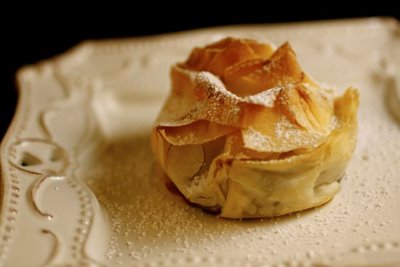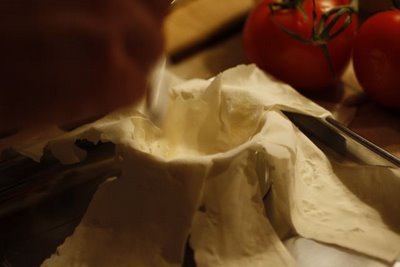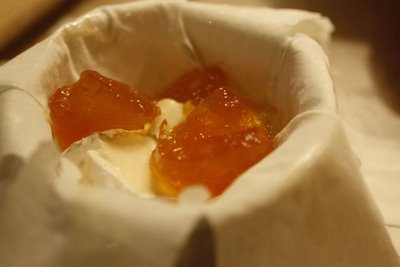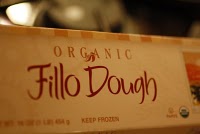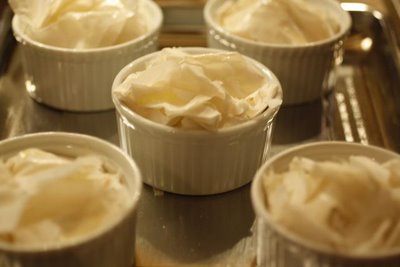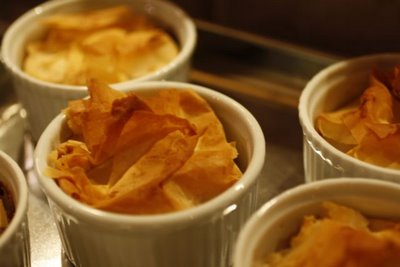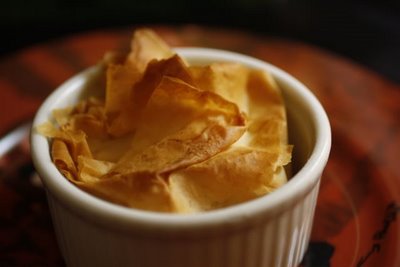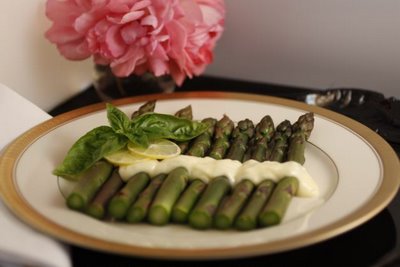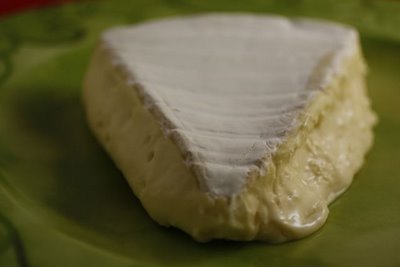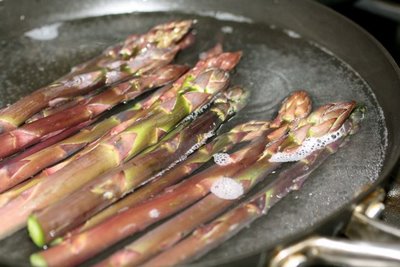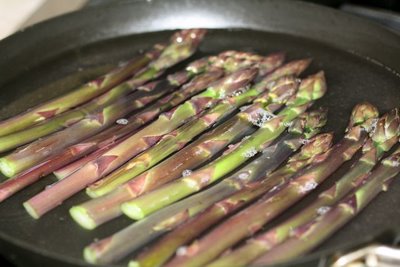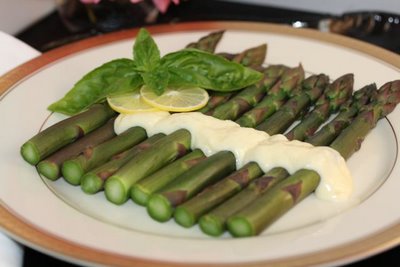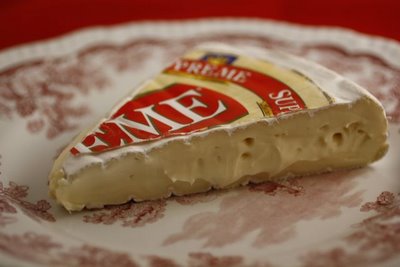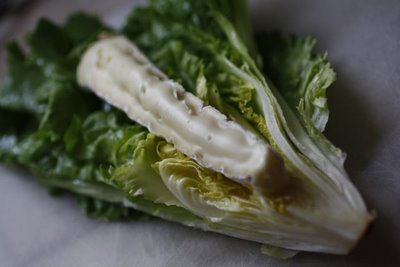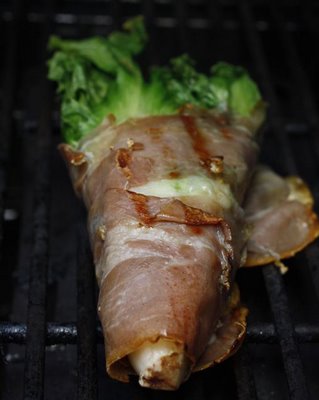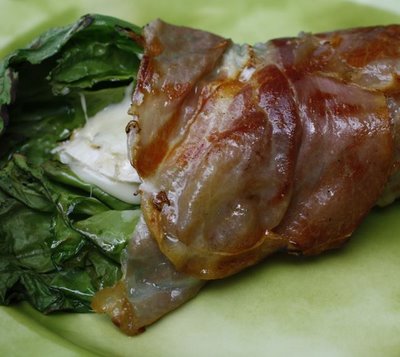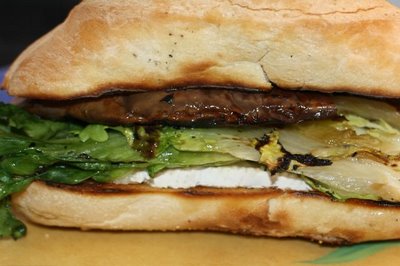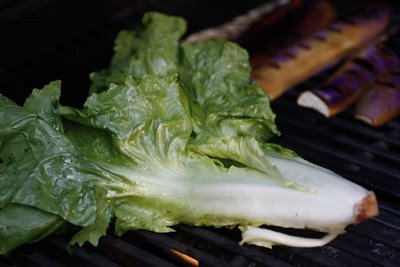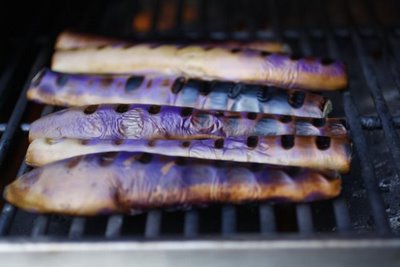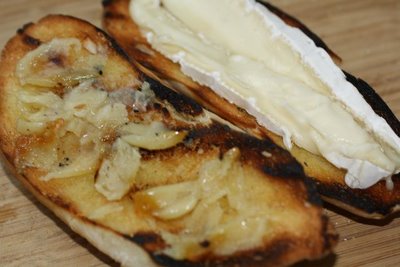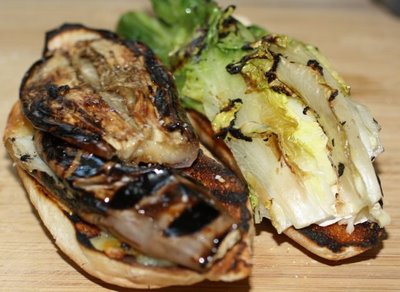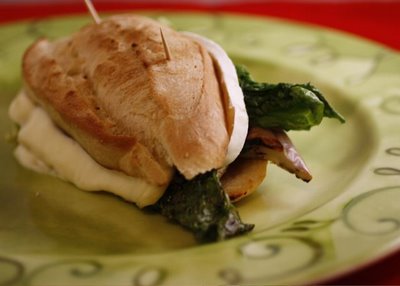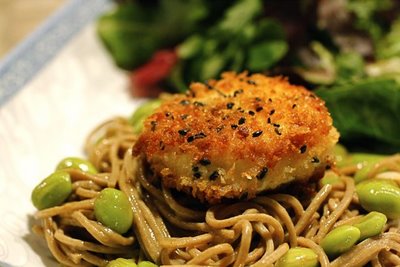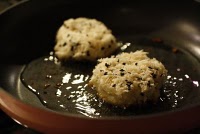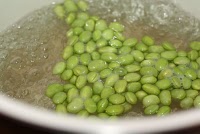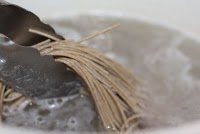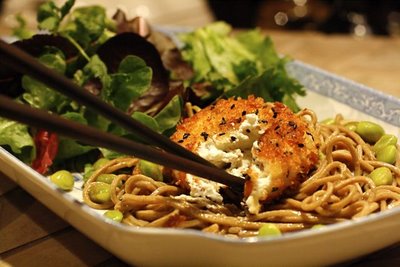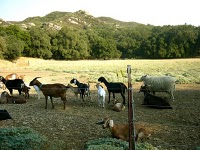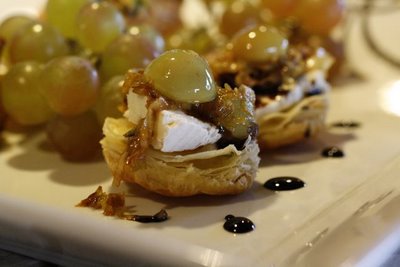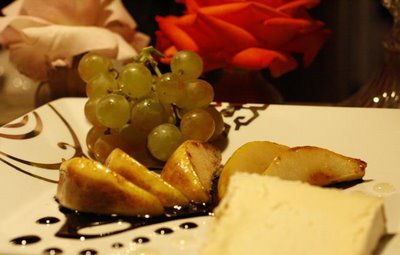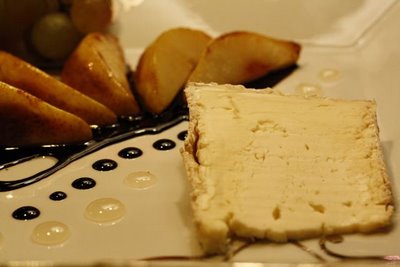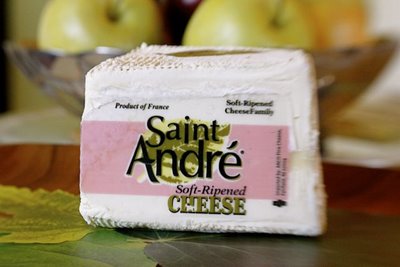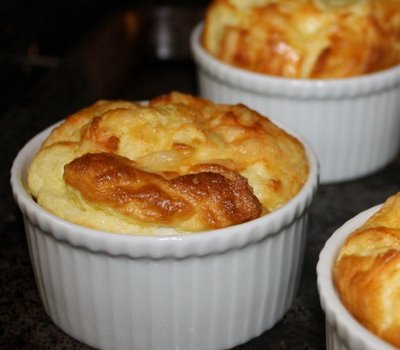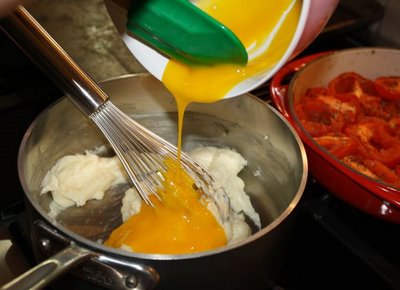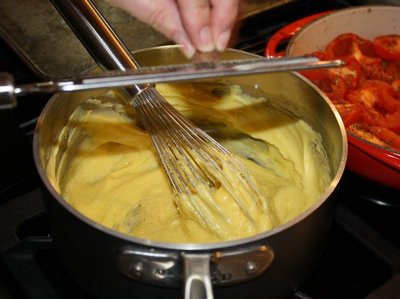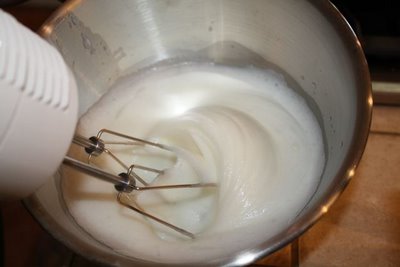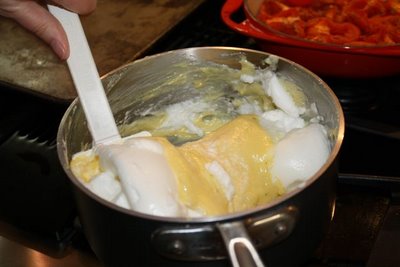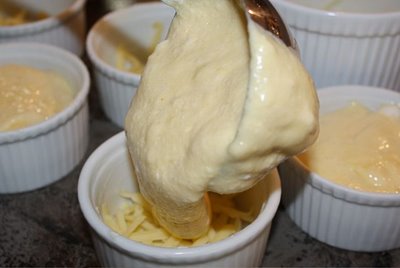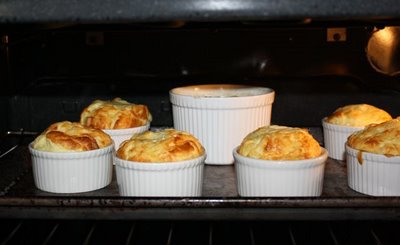Baked Brie in Fillo Dough with Assorted Preserves
Serve with Fresh Fruit
Brush ramekins with melted butter. Cut thawed fillo into strips, brush lightly with butter. Place in ramekins in a star pattern.
Crafted in Normandy, Ile de France Brie is made from the fresh pasteurized milk of grass fed cows.
Fill the bottom of the ramekin with this delicious cheese, some fruit preserves of your choice, and more cheese on top.
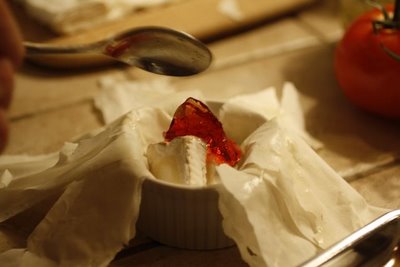
Here we used homemade pomegranate jelly compliments of my dear neighbor, Grace. Other flavors in this batch included apricot jam, fig jam, and mixed berry jam.
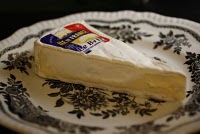
Manufactured since the 8th century, it is often referred to as the King of Cheese. Brie was popular among French royals, one of whom – King Louis XVI – allegedly requested it as his last meal. In 1936, Ile de France Brie was brought to the United States aboard the first refrigerated ocean liner.
These days, many varieties of Brie are produced all over the world. The rich, creamy Ile de France imported Brie from the Normandy region which is handily available here in the US, should not be confused with cheese of AOC designation from the Brie region, Brie de Meaux and Brie de Melun which are not legally available in the US as they peak before the 6o day aging requirement for raw milk cheese. Next visit to France, “True Brie” will be atop the tasting list!
Cut off extra long ends of the dough, draw up over the top to make a loose flaky cap. Brush top of dough with a little more melted butter.

